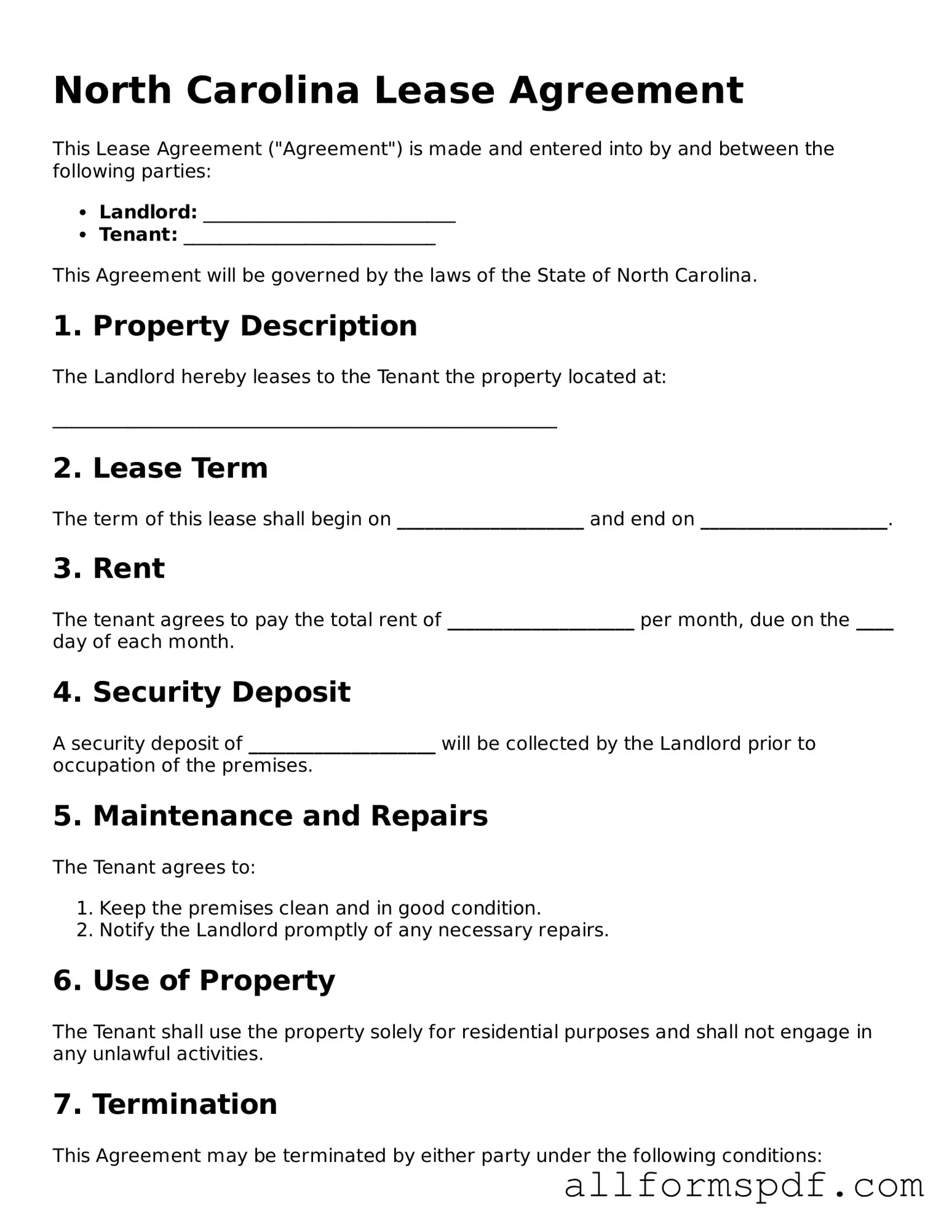Fillable Lease Agreement Form for North Carolina
A North Carolina Lease Agreement form is a legal document that outlines the terms and conditions between a landlord and a tenant for renting residential or commercial property. This agreement serves to protect the rights of both parties and ensures clarity regarding rental payments, maintenance responsibilities, and lease duration. Understanding this form is essential for anyone entering into a rental arrangement in North Carolina.
Create My Lease Agreement Now
